My Favourite Pieces: Andrew Logan’s cosmic celebration of joy and mirrors
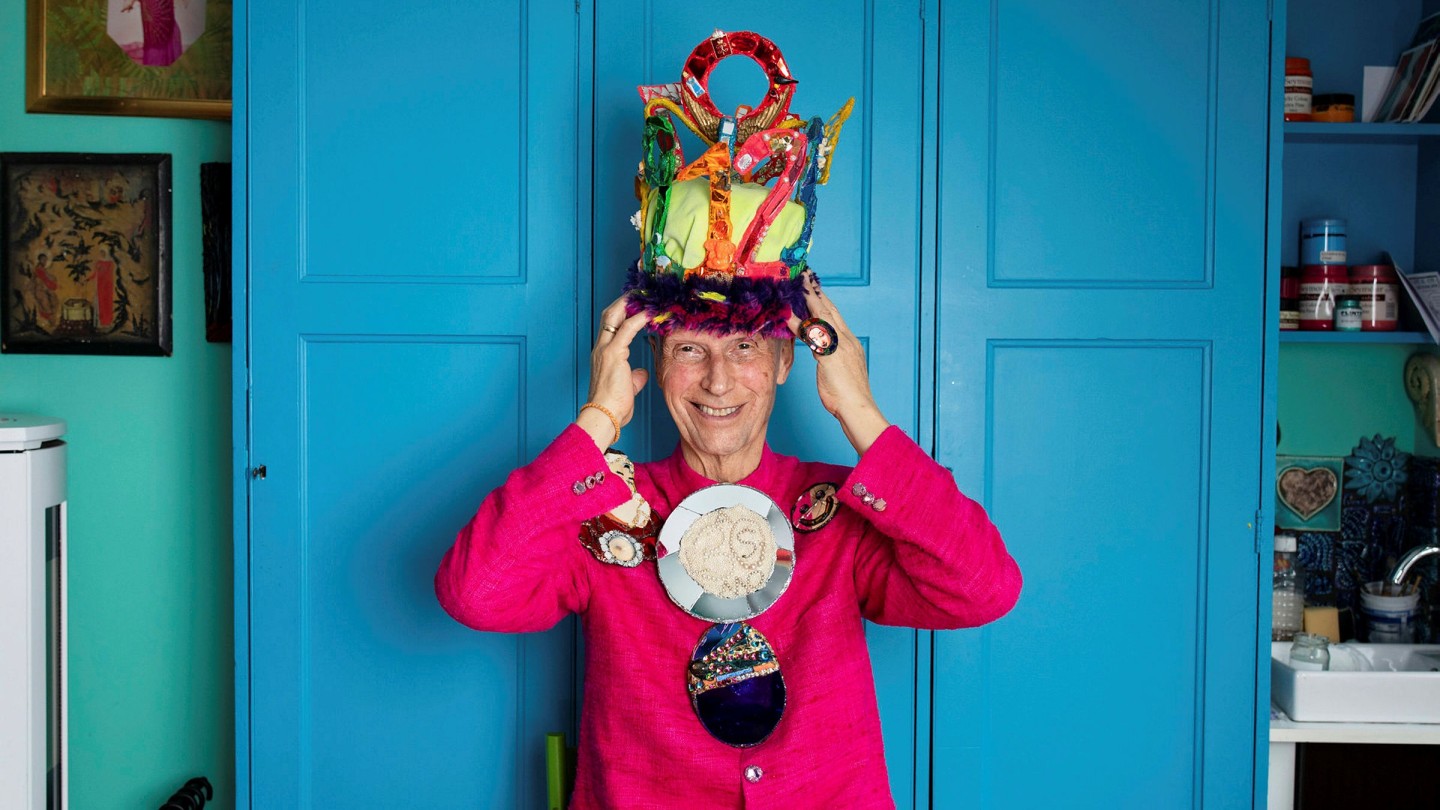
Roula Khalaf, Editor of the FT, selects her favourite stories in this weekly newsletter.
Andrew Logan has been a British national treasure since before that phrase was invented. His career as a sculptor — of mobiles, installations, jewellery and more — spans 50 years and, this year, the museum he created to house his work celebrates its 30th anniversary.
He began making jewellery in the early 1970s, encouraged by his first patron, the fashion designer Thea Porter. He became a celebrity in the former Soviet Union in the 1990s for his joyous and flamboyant creations during the period of perestroika reforms. And, in the UK, his Alternative Miss World contest is regarded as a fixture that introduced a colourful dose of anarchy and inclusion into London’s cultural life.
Now in his eighth decade, he still goes to his studio every day. He continues to accept commissions, which could be for a brooch or for a major installation — he recently completed a 45ft-long facade for Mumbai International airport.
He describes how, as a nine-year old growing up in small town Oxfordshire, he created the Happy Club, whose aims, set out in its name, he still adheres to today . . . “except it’s global now,” he says.
He only ever wears jewellery that he has made himself and is proud of the fact that everything has been made personally by him, even as his reputation grew along with the demand for his work.
Smiley brooch, mirror and resin, 1990s
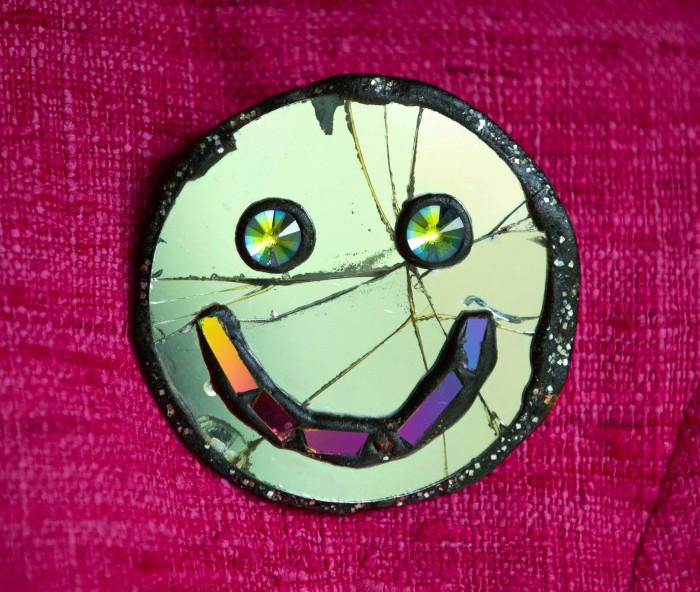
“I have always loved the smiley image and because my work is about joy, it seemed the most obvious thing to do in glass,” he says. “I always wear a Smiley now, I wear one every day on every garment. I’m wearing a pink one at the moment.
“But, if you wear something like this for years, you have to realise that mirror is a moving, living being. If you look at Roman glasses you can see they are thicker at the bottom because glass actually moves over the centuries. With mirror, and in combination with resin, it can also crack.”
If an owner of one of his pieces tells him it has developed cracks his response is: “Look at it like life: as we get older, we get lines, so it’s ageing really. Wisdom. I always say wisdom is becoming to the piece, it gives character.”
Christmas brooch, mirror, resin, repurposed Christmas card, 2002
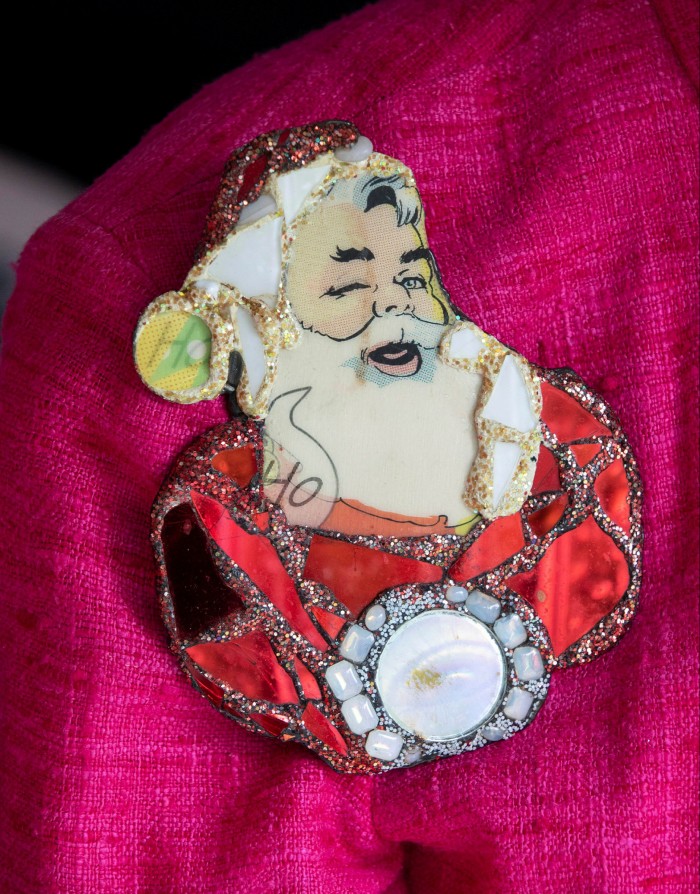
Every year, Logan makes a new Christmas brooch. “Christmas should be every day,” he says. “This is how we should be celebrating the world and the earth and where we live, and the privilege we have. This particular brooch is interesting because it combines materials I love to use — mirror and found objects. The image on the card was called Smiling Santa. It’s just that whole thing of celebration.”
The brooch also reminds Logan of his “great friend” Divine (Harris Glenn Milstead), the actor and singer who People magazine described as the “Drag Queen of the Century”. When Divine died in 1988, Logan created a shrine to Divine in his museum. “Christmas was Divine’s favourite time of year,” he says.
It is also associated with Logan’s passion for sharing. “When I was a child, I always made Christmas presents for people. In fact, when I started making jewellery it was part of that. The first 10 years of making jewellery, I used to give it all away.”
Cosmic Egg, mirror, resin, Indian black star, 2002
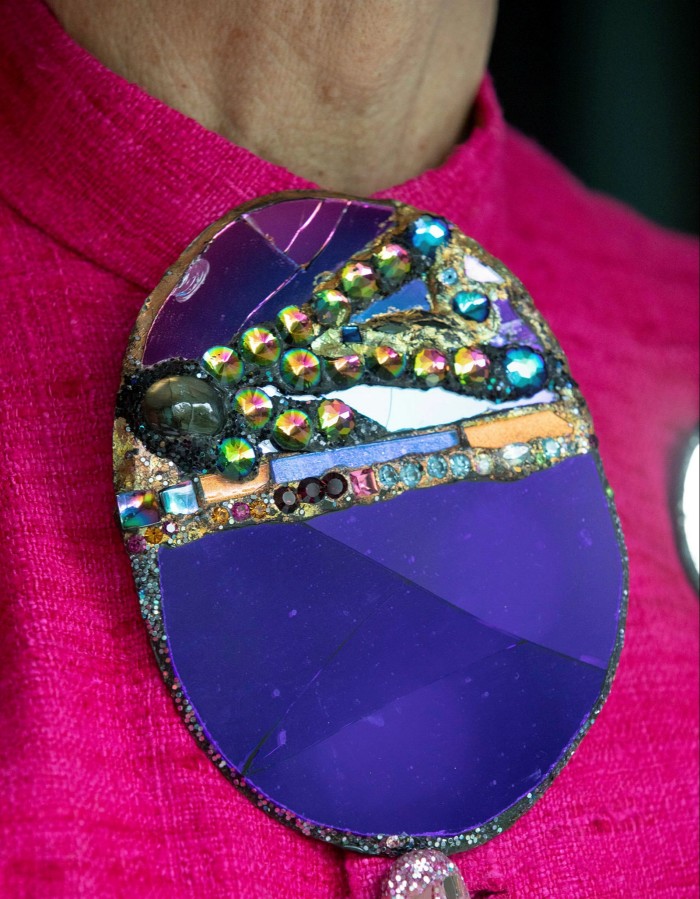
This Cosmic Egg brooch, with its vibrant, shimmering colours, is one of a long series of works going back to a trip Logan took to India in 1982 with his friend, fashion designer Zandra Rhodes.
The result was his first Cosmic Egg, a 4.5m by 2.5m sculpture now residing in his museum. The visit also began a life-long relationship with India. “Visiting India was like going home,” he says. He has returned every year since, often to an ashram in Brindaban. “It’s a little medieval city, with little streets with open sewers and beautiful temples. It’s a city of devotion, of Krishna. It’s the Krishna cult which, of course, is all about joy and happiness, so I fitted in really well there.”
Logan says the Cosmic Egg is “basically about where we’re going and where we’ve come from. It’s part of the mythology of India and I just embraced it. This particular brooch I wear to funerals and, if I were ever invited to christenings, I would wear it to those as well. It’s about the beginning and the end really.”
Raphael ring, mirror, resin, painted portrait, circa 1990
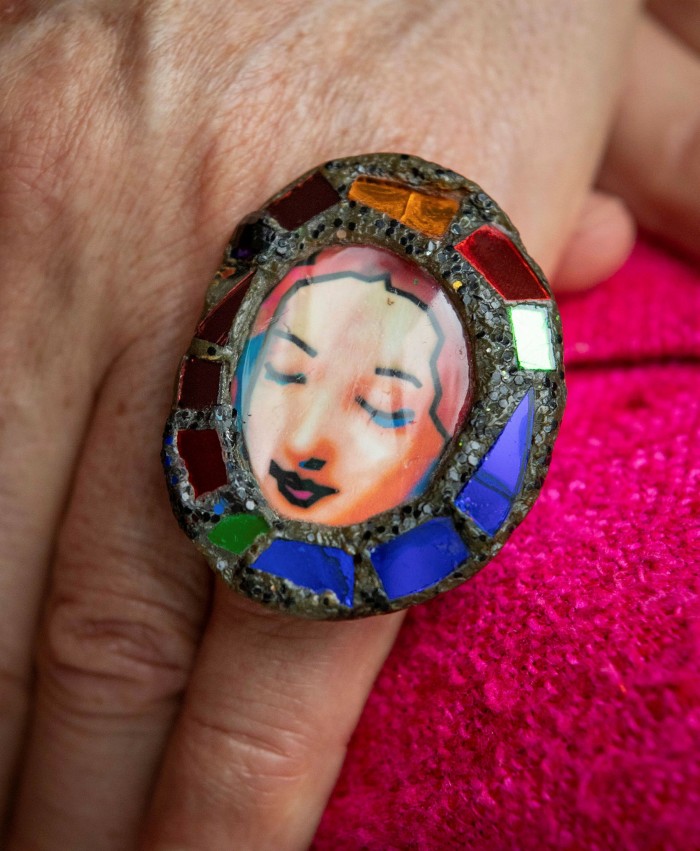
This ring is a particularly poignant piece for Logan. Made from mirror and resin, it also includes a painted centrepiece by his friend of 50 years, the artist Duggie Fields, who died in March this year. It is called Raphael as the portrait is painted in the style of the great Italian Renaissance painter.
“I wear this ring a lot,” says Logan. “I call it my harlequin. Duggie and I would talk almost every day, about art and life and everything.”
The glass he has used for the ring comes from Thailand. “It’s very, very thin and they use it on the temples there,” says Logan. “If you go to Bangkok, you’ll see the Temple of the Emerald Buddha is encrusted with this cut glass. You can break it with your fingers.”
Logan thinks the ring was made 30 years ago, “but it could be 10. The date has worn off the back.” In more recent years, he has begun adding a layer of varnish to the back of his pieces to better preserve his signature and the date.
30 Pearl Years of Almos brooch, mirror, resin, synthetic pearls, 2021
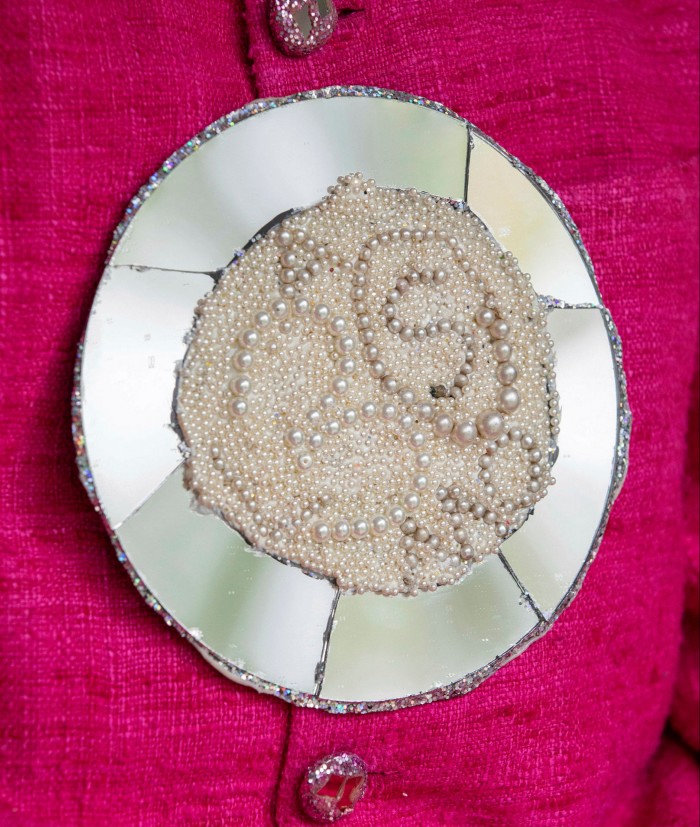
This year, Logan celebrates 30 years since he opened the Andrew Logan Museum of Sculpture in converted squash courts in the Welsh village of Berriew. His reasons for opening the museum were in part due to the fact that he is so prolific.
His use of synthetic pearls in this anniversary brooch is also significant. “I could put diamonds in these works, but what difference would it make, because the essence of them is not the stones but what I have done with them and how I create the pieces.”
Neon Numbers crown, aluminium, glass, resin, found objects, 2014
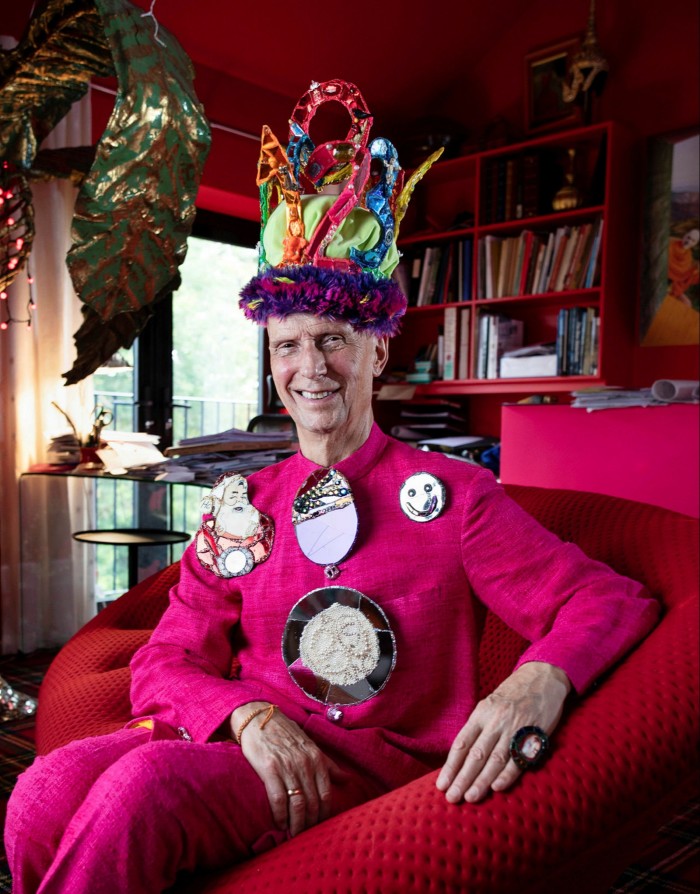
This is the 14th crown that Logan has made, as part of the Alternative Miss World event that will this year celebrate its 50th anniversary. They represent each year’s particular theme and are part of the Alternative Crown Jewels.
“There are 15 or 20 contestants, it’s first-come first-served. They design their own outfits — daywear, swimwear, eveningwear. We have cabaret and judges and I call it a surreal art event for all-round family entertainment. It’s organised chaos and everyone volunteers. It’s all to do with love, joy and surprises.”
He is hoping that the 50th anniversary event will be held at London’s Globe theatre next year. The theme is gold. “I’ve made the crown. That starts the event for me. Everything emanates from that,” he says.
He has also been working on a portrait of David Hockney. “I’m using mirror; it is a totally unique process. No one else in the world is doing mirror portraits. I’ve always wanted to do a portrait of David. I’ve known him since 1966, so this was a wonderful opportunity. I just thought, what a wonderful thing to be able to do.”
Comments